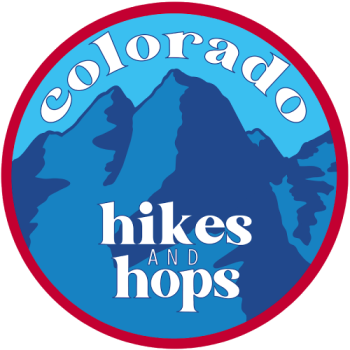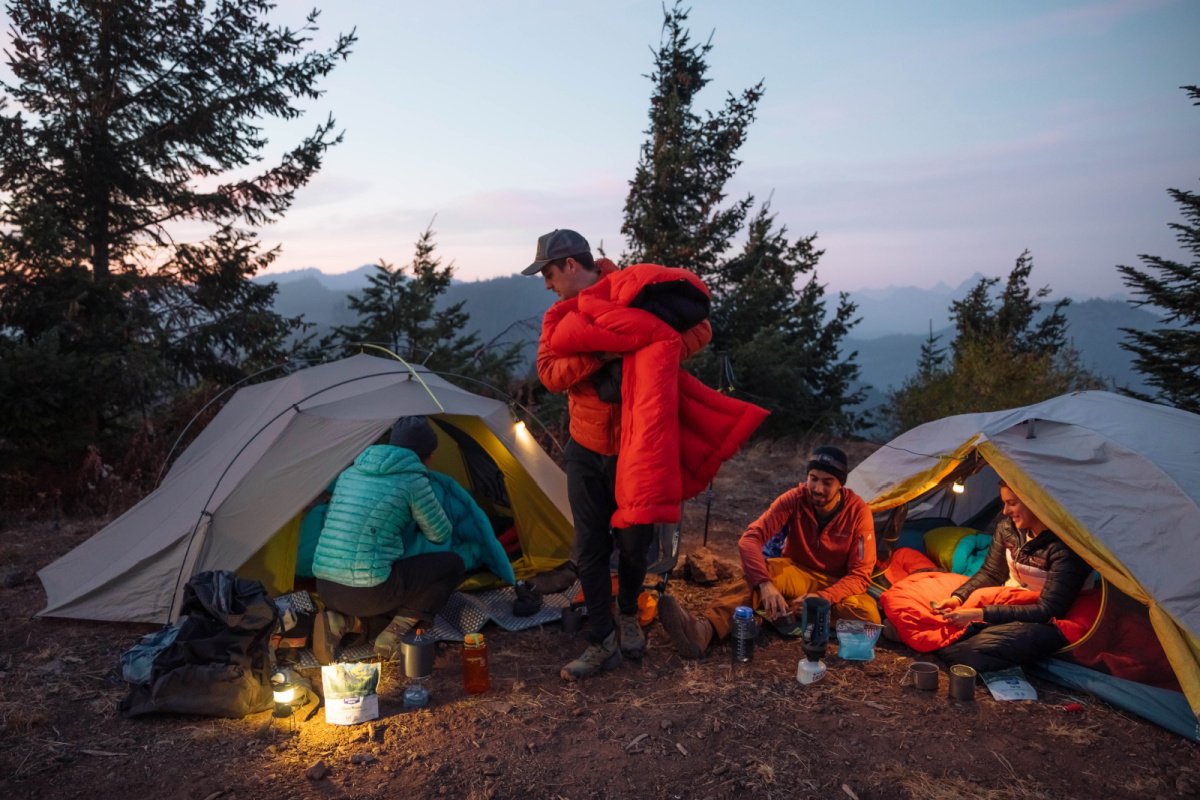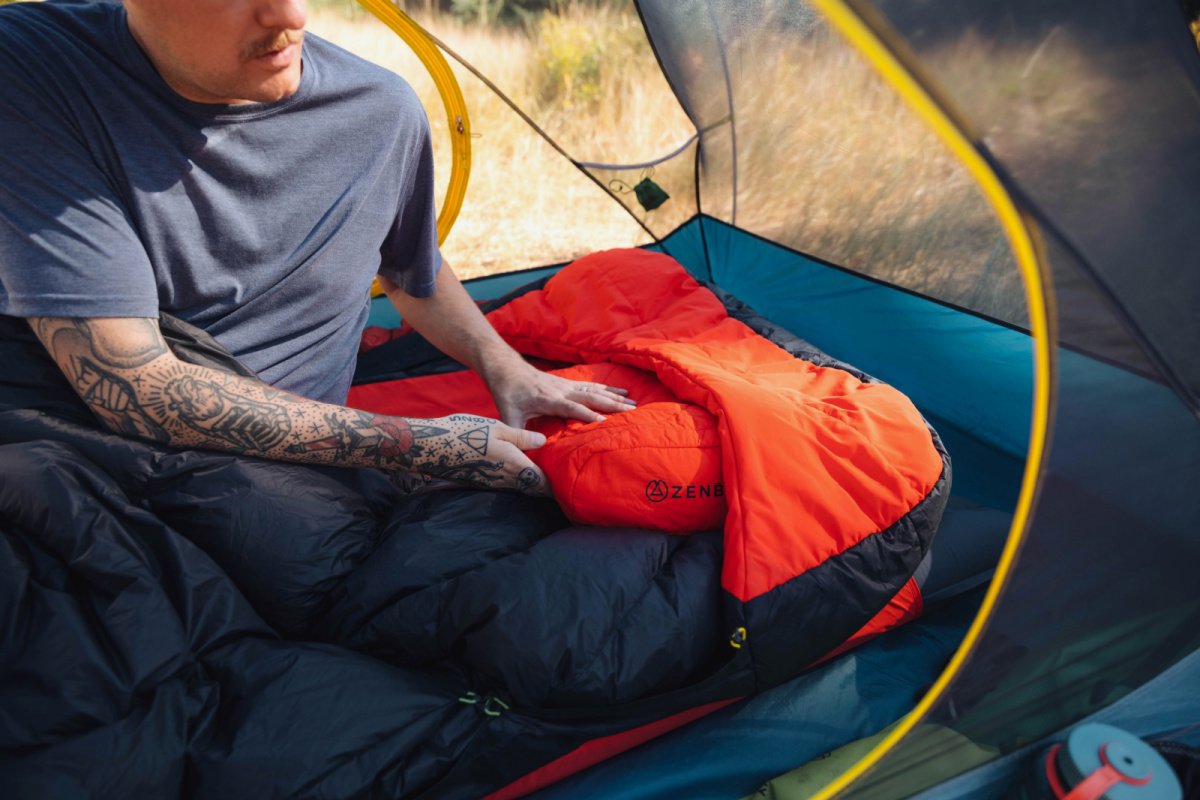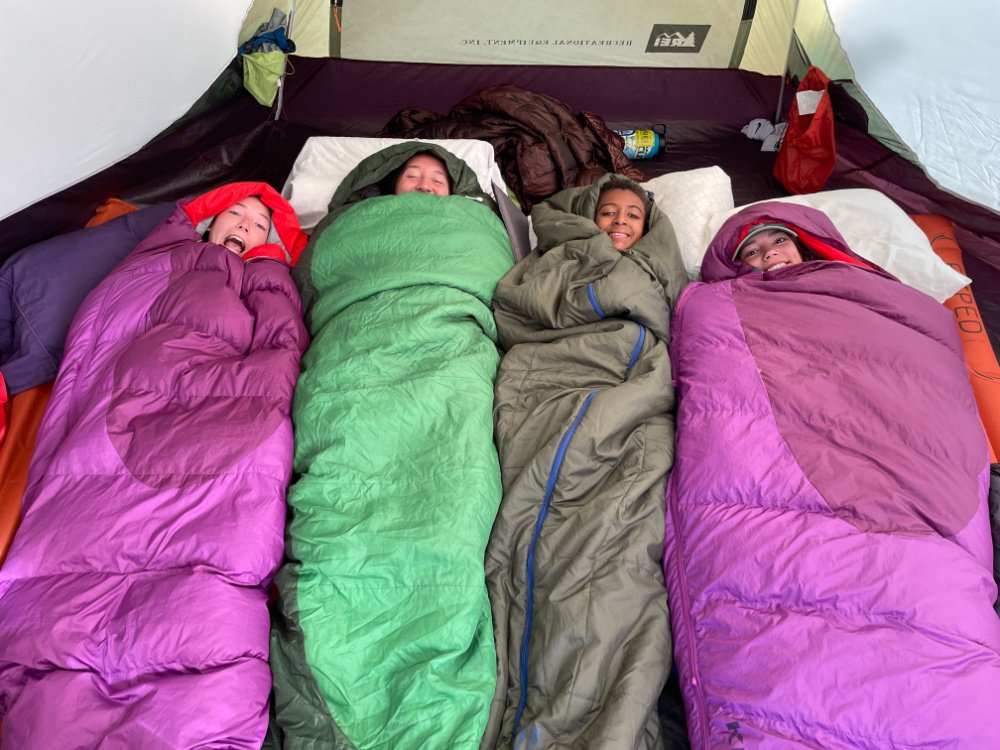What to Look for in a Backpacking Sleeping Bag
This post contains affiliate links, which means if you click through and make a purchase, we make a small commission at no extra charge to you. Thank you for supporting our small business!
What to Look for in a Backpacking Sleeping Bag in 2024
When backpacking, a good night's sleep is crucial for energy and endurance on the trail.
Choosing the right sleeping bag is essential for a comfortable and restful night's sleep.
Here are the 5 key features to look for when selecting a backpacking sleeping bag.
Our three favorite backpacking sleeping bags for Colorado include the new Zenbivy Core Beds
Temperature Rating
The temperature rating of a sleeping bag is one of the most important features to consider. It indicates the lowest temperature at which the bag will keep you warm.
Make sure to choose a bag with a temperature rating that matches the conditions you will be camping in.
If you plan to camp in colder temperatures, choose a bag with a lower temperature rating.
Keep in mind that temperature ratings are just a guide and personal comfort levels can vary.
I gravitate towards a sleeping bag with a 20 degree temperature rating for camping in Colorado in spring, summer, or fall.
Weight and Packability
When backpacking, every ounce counts.
Look for a sleeping bag that is lightweight and easy to pack down.
Down insulation is typically lighter and more compact than synthetic insulation, but it can be more expensive and less effective when wet.
Synthetic insulation is bulkier and heavier, but it retains its warmth when wet and is typically more affordable.
Consider your priorities and the conditions you will be camping in when choosing between down and synthetic insulation.
We always look for a sleeping bag that comes with a compression sack or stuff sack to make packing easier.
Is a 3lb sleeping bag too heavy for backpacking?
In short, no.
As you shop for the backpacking sleeping bag right for you, you’ll note that the average weight of one for three-season use will range anywhere between 2.5 and 4 pounds.
Variables like temperature rating and size, as well as if they are filled with down or synthetic insulation, will determine just how light and packable your bag will be.
I love that my 20 degree down sleeping bag is lightweight — just 2.34 lbs — and easily compressible.
Insulation Type
When choosing a backpacking sleeping bag, one of the most important features we consider is the type of insulation.
Down insulation is made from the soft, fluffy feathers found under the outer feathers of ducks and geese. It is lightweight, easy to compact into a stuff sack, and provides excellent warmth-to-weight ratio.
However, down sleeping bags can be more expensive and also loses its insulating properties when wet.
Synthetic insulation, on the other hand, is made from polyester fibers and is bulkier and heavier than down. But it also retains its insulating properties when wet and is typically more affordable.
The Zenbivy quilt quickly detaches from the sheet in the Core Bed sleeping bag system
Is down or synthetic best for my backpacking trip?
Both types have their pros and cons.
I love the way my 20 degree backpacking sleeping bag is lighter and warmer than a same-weight synthetic bag. But remember, down fails to insulate when it's wet.
If I plan to sleep overnight in wet, rainy conditions, I would grab my synthetic Zenbivy Bed instead.
If you think your backpacking tent will keep you dry nearly no matter what, go for a down sleeping bag. This way, you’ll cut down on weight and volume when adding it to your backpack.
We always consider the weather conditions we will be camping in, as well as our budget when choosing between down and synthetic insulation in the best camping sleeping bags.
RELATED READING: How to Go Winter Tent Camping in Colorado
Shape and Size
Another important feature we consider when choosing a backpacking sleeping bag is the shape and size.
Sleeping bags come in a variety of shapes, including mummy, rectangular, and semi-rectangular.
Mummy bags are the most thermally efficient, but can feel restrictive to some people.
Rectangular bags offer more room to move around, but may not be as warm.
Semi-rectangular bags offer a compromise between the two.
It’s also important for us to choose a sleeping bag that fits our body size and shape. A bag that is too small will be uncomfortable, while a bag that is too large will not provide enough warmth.
What is a good size for backpacking sleeping bag?
How tall are you and how much wiggle room do you like in your sleeping bag?
Most sleeping bags will suggest which length to get according to your height.
You’ll find that a lot of backpacking sleeping bags are made Mummy style, making them lighter and less bulky than rectangular sized bags.
We like Zenbivy and their creative offering of a two-piece sleeping bag system that wraps around your sleeping pad. With the same bag, you can alternate between a Mummy foot box fit and boxy fit.
Material and Durability
When choosing a backpacking sleeping bag, it’s important for us to consider the material and durability.
We look for a bag made from high-quality materials that are both lightweight and durable.
Common materials include down, synthetic, and hybrid blends.
Like we keep saying, down is lightweight and compressible, but can lose its insulating properties when wet. Synthetic materials are more durable and retain their insulation when wet, but are typically heavier and bulkier.
Hybrid blends offer the best of both worlds, with a combination of down and synthetic materials.
Additionally, we look for a sleeping bag with a durable outer shell that can withstand the wear and tear of backpacking trips.
Backpacking Sleeping Bags for Colorado
Backpacking the Four Pass Loop in Colorado
What kind of sleeping bag is best for backpacking?
If we’re backpacking in Colorado, we want a lightweight, warm, compact sleeping bag that packs down tight into a compression sack.
We like sleeping bag that weighs less than 3 pounds and compressed down to about 9 L in size. Add a sleeping pad that weighs 1-2 pounds, and we’re set.
For lighter weight sleeping bags, opt for ones filled with down. Down is also warmer when compared to synthetic filling of the same weight.
But again, down fails to insulate when it's wet. If you plan to sleep in wet, rainy conditions, then synthetic may be right for you.
Synthetic insulation, which is made from polyester fibers, has a heavier warmth-to-weight ratio, meaning it won’t compress down as well. In other words, a synthetic bag of same temperature rating will be heavier and bulkier than a down sleeping bag for backpacking.
What temperature sleeping bag should I get for backpacking?
In the summer, we have found 20-25 degree sleeping bags to be plenty warm for camping under the stars up in the Colorado mountains at higher elevation.
By higher elevation camping in Colorado, we mean 8,000 feet to 11,000 feet in elevation.
You can always add a sleeping bag liner for warmth or sleep in layers.
PRO TIP: I like to add extra clothes inside the bottom of my sleeping bag — a great way to keep my feet warm as well. And the clothing will be warm in the morning when I’m ready to put them on.
Our 3 Favorite Backpacking Sleeping Bags
Kelty Cosmic 20 Down
This trapezoidal shaped sleeping bag has been my go-to for camping and backpacking the last several years.
While a mummy shaped bag, I find I don’t feel constricted in the shoulders and my feet still have room to move too.
The Kelty Cosmic 20 Degree Down is my favorite three-season lightweight sleeping bag.
Features:
Innovative trapezoidal baffle construction = thermal efficiency
Lightweight and warm 550 fill down
Environmental and health friendly C0 and PFC-free DWR fabrics
Zippered internal stash pocket for headlamp, cell phone or actual… stash
Buttery-soft and durable 20D Nylon shell fabric
Zipper draft tube with anti-snag zipper design makes it easy to get in and out
Dual slider for ventilation with locking zippers
Natural fit spacious footbox = more room to wiggle your toes
Comes with stuff sack for quick departures
The PFC-free water-repellent coating aims to provide a healthier environment
Specifications:
Temperature Rating: 20 Degrees
Insulation: 550FP Duck Down
Fits to: 6' 0" / 183 cm
Weight: 2.52 lb. / 1.14 kg
Fill weight: 16.37 oz. / 464 g
Stuff Sack Size: 8" x 13" / 20 x 33 cm
Length: 78 in / 198 cm
Shoulder Circumference: 62 in / 158 cm
Hip Circumference: 58 in / 147 cm
Foot Circumference: 40 in / 102 cm
Materials and Durability:
I’ve had my Kelty Cosmic 20 Down for nearly 10 years now and it’s still going strong. After a couple of 7 day backpacking trips and countless camping trips in Colorado and national parks across the USA, I’d say this sleeping bag is very durable.
Insulation: 550FP Duck Down
Shell material: 20D 400T Nylon
Liner material: 50D 300T Polyester
Zenbivy Core Bed
The Zenbivy Bed is the first hybrid sleeping bag of its kind that not only matches a mummy bag in warmth/weight ratio, but does so while eliminating constriction and providing unparalleled versatility, excelling in a much wider range of temperatures.
I loved sleeping in my 25 degree synthetic Zenbivy Core Bed this summer. Having the quilt option meant I could more easily regulate my warmth at night. Kicking my foot out to sleep like I do at home? No problem!
The Zenbivy Core Bed aims to be the simplest, softest, and most affordable backpacking bed.
No zippers to break here! The proven draft-free clip system keeps things minimal and lightweight. The Core Bed’s simple patent-pending Fast Footbox™ utilizes just one hook to quickly transform the footbox from "mummy mode" for maximum warmth to “wide mode” for maximum space.
The super comfy 50d Pongee liner and supple new 30d Nylon Taffeta shell provide maximum home-like comfort.
Bonus: Zenbivy sleeping bag systems are available in both Down and Synthetic versions! You can choose between 25 degree and 10 degree 650-fill down or 25 degree synthetic options.
Update: Zenbivy CORE SHEETS ARE LIGHTER THAN EVER IN 2024
Customers talked and Zenbivy listened! Here’s what changed for Zenbivy Core Beds:
New Core Sheets are comfort-mapped, swapping panels of 50D Pongee for our soft 30D Taffeta to save weight.
Core Sheets feature our new headboard clips to keep your Zenbivy SoftTop™ Pillow in place.
Sheets are available in a NEW 650fp down insulated style.
All clips are attached with webbing instead of cord for added strength and durability.
Tanya currently owns the the 25x72” Zenbivy Core Bed in 25 degree Synthetic version, with an insulated sheet.
Features:
Patent-pending Fast Footbox™ technology utilizes just one hook to quickly transform the footbox from "mummy mode" for maximum warmth to “wide mode” for maximum space
Clip closure system to connect the backpacking quilt to the separate fitted sheet and ensure a draft-free night of sleep
Legendary soft sheet-like 50d Pongee liner and a new amazingly supple and durable 30d Taffeta shell - SO SOFT!
Kylie-curve™ drawstring comfortably seals in warmth around your shoulders but leaves the edges free to drape at your sides or tuck into the sheet’s hood
Roomy Hood insulates your head and arms and keeps your pillow in place throughout the night*
Thermally Mapped Baffles to maximize thermal efficiency
*Core Sheets are also available with an uninsulated hood if you're looking to ditch some weight (learn more below).
Materials and Durability:
Synthetic (quilt & hood): 240g 1d/3d XD Synthetic
Liner: 50d Polyester Pongee, coating-free, 300T, cire, 62g/m2
Shell: 30d Nylon Taffeta, coating-free, 380T, cire, fluorocarbon-free DWR, 36g/m2
Clips: Nifco HND5L, HND7
Specifications:
All Core Quilts are compatible with all Core Sheets, regardless of size. The quilt is sized to fit you, the sheet is sized to fit your mattress. See our full size guide for more information.
Limit Rating: 25º F (-4°C) / Comfort Rating: 35°F (2°C
Weight of Core Quilt 25° Synthetic:
Regular: 2 lb 5 oz (1.05 kg)
Large: 2 lb 10 oz (1.19 kg)
XL: 3 lb 2 oz (1.42 kg)Weight of Core Sheet Insulated:
20”x72”: 14 oz (0.40 kg)
25”x72”: 1 lb (0.45 kg)
25”x77”: 1 lb (0.45 kg)
30”x80”: 1 lb 2 oz (0.51 kg)Recommended Zenbivy Dry Sack size: 15L
(Dry Sack and Compression Caps sold separately)
Marmot Trestles 30° Sleeping Bag
Melody and her kids used this bag for summer wilderness camping trips in Wisconsin, as well as for backpacking the Four Pass Loop with her daughter.
The Marmot Trestles 30 degree synthetic sleeping bag is a great for all kinds of camping and backpacking summer adventures in the Rockies.
This dreamy sleeping bag is soft, like down and it packs up small and light.
And it is the best value for a backpacking sleeping bag.
Don’t cancel your next overnight adventure just because the forecast is calling for a little rain. Marmot’s synthetic sleeping bag is absolutely amazing for keeping us warm and dry in cool and wet conditions.
Melody packed the Marmot Trestles 30 Degree Bag while Caroline slept in the Kelty Cosmic Down sleeping bag while backpacking in Colorado
Features:
Fold-Down Second Zipper Provides added Ventilation and Easy Access, Main Zipper Anti-Snag Slider reduces Snagging
Anatomically 3D Footbox increases the insulation and room for your feet, for more Warmth and Comfort
Spirafil High Loft Insulation for Maximum warmth and durability
EN Tested
Combination Wave Construction Top provides Maximum Loft and Warmth, Blanket Construction Bottom for the best warmth and comfort under body
Full Length Locking YKK Two Way Zipper
3D Hood Construction
Stash Pocket
"Feely" Draw Cords
Snagless Insulated Draft Tube
Two Hang Loops
Compression Stuff Sack
Hiking the Four Pass Loop - Melody and Caroline did this iconic Colorado backpacking trip in 2022
Specifications:
Bag Temperature Fahrenheit: 30°F
Compressed Volume: 10.4 L
Footbox Size: 46.9”
Hip Girth:57.1”
Insulation Type: Synthetic
Lining Fabric: 70D 100% Polyester
Pack Volume: 16.8 L
Shoulder Girth: 62 in
Stuff Sack Size:18.1 x 8.7 in
Product Weight: 3 lbs 0.7 oz,
Zipper Location: Choose between Left Zip or Right Zip
Which Sleeping Bag Would You Choose?
Out of our top three options mentioned above, which sleeping bag would you choose to bring along on your next Colorado backpacking or camping trip?
Zenbivy Core Bed - Available in both Down and Synthetic options with various temperature ratings!
11 Camping Essentials for Colorado
While we love backpacking in Colorado, we also enjoy car camping with our families. With over 40 years combined experience of camping with kids, here are our 11 Must Haves for Tent Camping in Colorado.
Check out our Ultimate Guide to Tent Camping in Colorado.
Read more about hiking the Four Pass Loop, our 12 favorite campgrounds in Colorado, and the arduous Grand Canyon Rim to Rim Hike below:


















